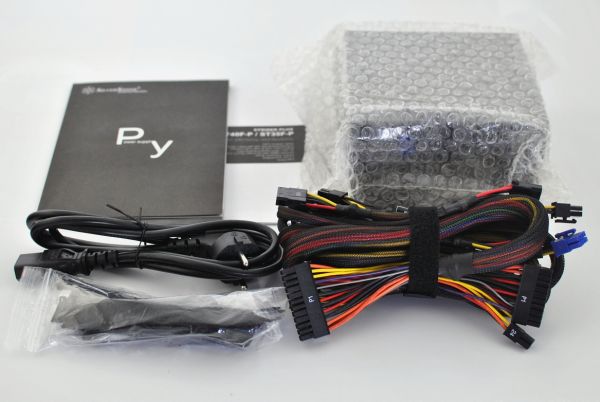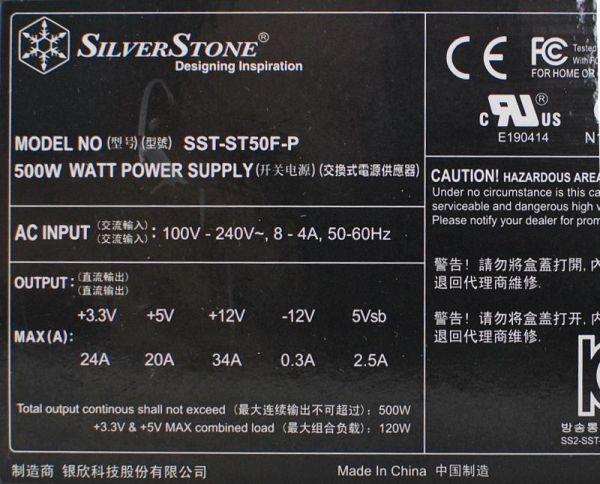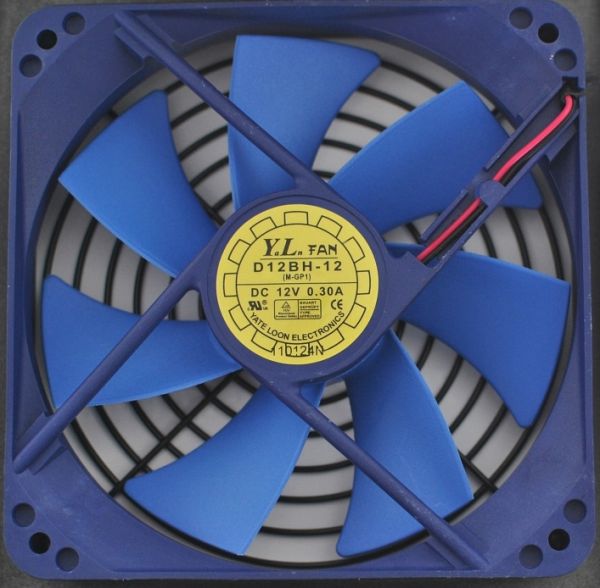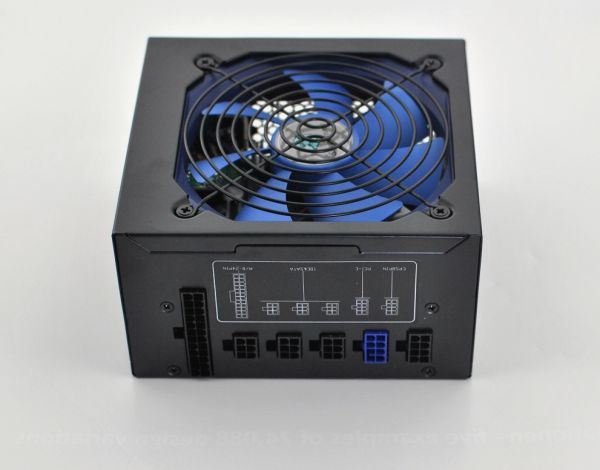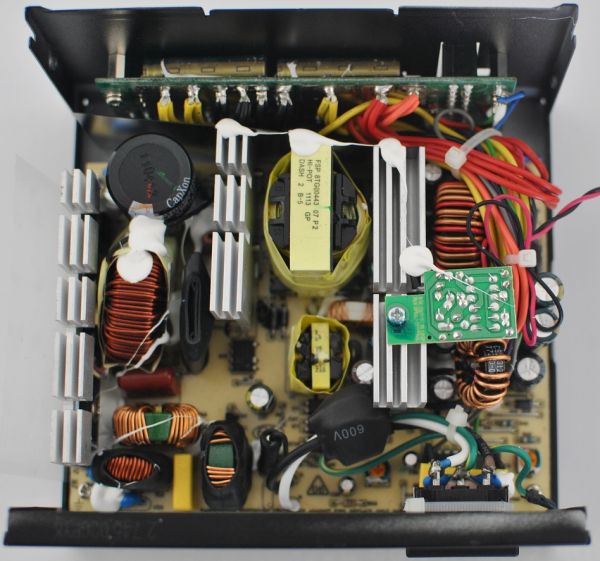
Original Link: https://www.anandtech.com/show/4908/silverstone-strider-plus-500w-modular-power
SilverStone Strider Plus - 500W Modular Power
by Martin Kaffei on October 10, 2011 4:10 PM EST- Posted in
- PSUs
- Cases/Cooling/PSUs
- SilverStone
- Strider Plus
- 500W
SilverStone Strider Plus 500W - Specifications
Today we take a look at a SilverStone PSU called Strider Plus. Along with the power supply, the package contents include a 10Amp power cord, screws for installing the PSU, several types of cable ties, and a very detailed manual. The latter contains exemplary illustrations and a description of the installation process, but the German translation of the text could be better. According to the manufacturer's specifications, the PSU uses a single +12V rail. In addition, the power supply is able to work 24 hours a day at 40°C ambient temperature. The 80 Plus Bronze certificate is another feature. The14cm case length is also very compact.
The maximum load for +3.3V and +5V is 20A/24A, which is quite a bit for a "modern " PSU. Together, these outputs provide 120W. Information for the +12V rail is not available, but we'll focus on the maximum value based on the 34A rating, which would be 408W. The UL number E190414 shows that FSP is the OEM for this power supply.
This Yate-Loon fan with the model number D12BH-12 (M-GP1) and 120mm diameter uses ball bearings and seven fan blades. The maximum speed is 2300rpm at +12V. The subjective loudness of the fan (and the electronics of course) will be investigated on the following pages.
SilverStone is a well known brand for high-quality (and expensive) cases. Beyond that they offer a large selection of power supplies. They have SFX-PSUs for HTPCs, redundant PSUs for server and workstations, and standard ATX PSUs for "normal" PCs. Today we take a look at a product from the latter category. The SilverStone Strider Plus 500W is a fully modular PSU with 80 Plus Bronze certification, going for a very affordable $60. That sounds interesting so far, so let us see if the internal design and measurements can satisfy.
Internal Design
The power supply layout comes from the manufacturer FSP and looks like the be quiet! Pure Power L7, 530W (+ cable management). The internal layout consists of three large heatsinks. Various heatshrinks protect against short circuits. Like most recent power supplies, the Strider Plus has active PFC and a common forward converter with two MOSFETs. The EMI filtering is well designed and the outputs are protected by an IC from Weltrend (WT7527). Most capacitors are made by CapXon and OST; these are very cheap capacitors compared to other brands and may not hold up as well long-term.
Voltage Regulation
| +3.3V Regulation/Ripple and Noise | |
| Load | Voltage |
| 10% | +2,73% (4mV) |
| 20% | +2,12% (8mV) |
| 50% | +0,91% (12mV) |
| 80% | -0,91% (16mV) |
| 100% | -1,81% (19mV) |
| 110% | -2,42% (22mV) |
| Crossload +12V max. | +1,51% |
| Crossload +3,3V/+5V max. | +2,73% |
| +5V Regulation/Ripple and Noise | |
| Load | Voltage |
| 10% | +2,20% (7mV) |
| 20% | +1,80% V (11mV) |
| 50% | +1,80% (14mV) |
| 80% | +1,20% (15mV) |
| 100% | +1,20% (18mV) |
| 110% | +1,00% (20mV) |
| Crossload +12V max. | +2,40% |
| Crossload +3,3V/+5V max. | -5,20% |
| +12V Regulation (Worst Rail)/Ripple and Noise (Worst Rail) | |
| Load | Voltage |
| 10% | +0,92% (9mV) |
| 20% | +1,01% (18mV) |
| 50% | +0,42% (35mV) |
| 80% | -1,08% (43mV) |
| 100% | -1,25% (58mV) |
| 110% | -1,58% (63mV) |
| Crossload +12V max. | -3,25% |
| Crossload +3,3V/+5V max. | +9,83% |
Noise Levels
| Sound Pressure Level (Ambient: 16dBA, 1m distance) | |
| Load | dB(A) |
| 10% | 20 |
| 20% | 20 |
| 50% | 20 |
| 80% | 26 |
| 100% | 30 |
| 110% | 32 |
Efficiency and PFC
| 115VAC, 60Hz | ||
| Load | Efficiency | PFC |
| 10% | 77% | 0.944 |
| 20% | 83% | 0.957 |
| 50% | 86% | 0.972 |
| 80% | 85% | 0.981 |
| 100% | 82% | 0.987 |
| 110% | 81% | 0.991 |
| 230VAC, 50Hz | ||
| Load | Efficiency | PFC |
| 10% | 79% | 0.822 |
| 20% | 84% | 0.940 |
| 50% | 87% | 0.970 |
| 80% | 86% | 0.978 |
| 100% | 85% | 0.986 |
| 110% | 83% | 0.988 |
The SilverStone Strider Plus 500W can deliver the specified power and even a bit more. The ripple and noise is low on all outputs, especially on +3.3V and +5V where less than 0.44% can be achieved. The efficiency is likewise well above the necessary values for 80 Plus Bronze. Only the measurements at 10% load are low on both power grids. Of course, 77-79% efficiency at 50W means you're drawing 63-65W from the wall; improving efficiency to 83% would cut power use to 60W, so the potential savings aren't all that noteworthy. The power factor reaches a maximum of 0.991, again with rather low PFC at 10% load on 230VAC.
Under load the power supply is clearly audible, and fan speed starts to ramp up once you reach 50% load. However, there isn't any background noise from the electronics, which is good. During the crossload tests +5V and +12V were out of the ATX specification. During test 2 +5V was significantly increased by the regulation circuit (still far away from 5.00V), but +12V was raised too. However, this is not a problem that concerns SilverStone only. The forward converter with coupled outputs, as it is used in most power supplies, has complications with crossload tests. In the future we will see that many 80 Plus Gold power supplies are better--and not just because of the higher efficiency. This is the reason for our new test procedure.
Conclusion
The SilverStone Strider Plus 500W is basically a good power supply with a fully modular connector system. The number of connectors and their distribution on the cables could be better, and there are no noteworthy features outside of the modular cables. During the load test the regulation of the output voltage is sufficient, and the efficiency is high for an 80 Plus Bronze model. The contents of the package are also very satisfying.

The power supply uses a well known layout from FSP, and it's a cheaper design. The PSU is nothing special, corresponding to what we have seen in many other models. The EMI filtering is well equipped, but a varistor in the entrance would be an advantage. All output cables should be proteced with heatshrinks, and while some of them are we would like to see the others protected as well. The relatively low-end OST and CapXon capacitors are acceptable for a PSU in this range, while the fan is pretty low-end as well. The result is higher acoustic noise than some other PSUs.
As our test shows, the power supply can provide the rated output without any complications. The efficiency at 10% could be somewhat higher, but few will notice the loss of a few extra watts. The voltage regulation on our crossload test 2 could also be better, but this is a typical problem for this kind of converter. The ripple and noise voltage is always low, and the power factor is high at all loads and input voltages.
The delivery contents of the power supply are quite remarkable. The many cable ties and illustrated manual are more typical of higher price class PSUs. While some will want more than three Molex connectors (on a single cable no less), the six SATA plugs are adequate. The 24-pin and 4+4-pin connectors are 55cm long, which is enough for most larger cases. The two 6/8-pin PCI-E cables might be better on separate cables as well, but for users with a single GPU the close proximity of the connectors can be useful, particularly in smaller cases. The sleeving could also be better, but this is a matter of taste and qualitatively not a disadvantage.
You can find the SilverStone Strider Plus online starting at around $70, which is by far the cheapest price for a fully modular 80 Plus Bronze power supply. On the other hand, if you don't need modular cables, you can find the Antec HCG 520W starting at $56, or the non-modular Strider Plus 500W will set you back $60 (with a $10 mail-in rebate). The competition also includes the popular and very favorable OCZ ModXStream Pro 500W, which you can now get for $30 after $20 MIR. If you prefer a quiet PSU and don't need modular cables, our pick of the bunch would be the HCG-520W; however, the modular SilverStone Strider Plus 500W is still an attractive offer.

